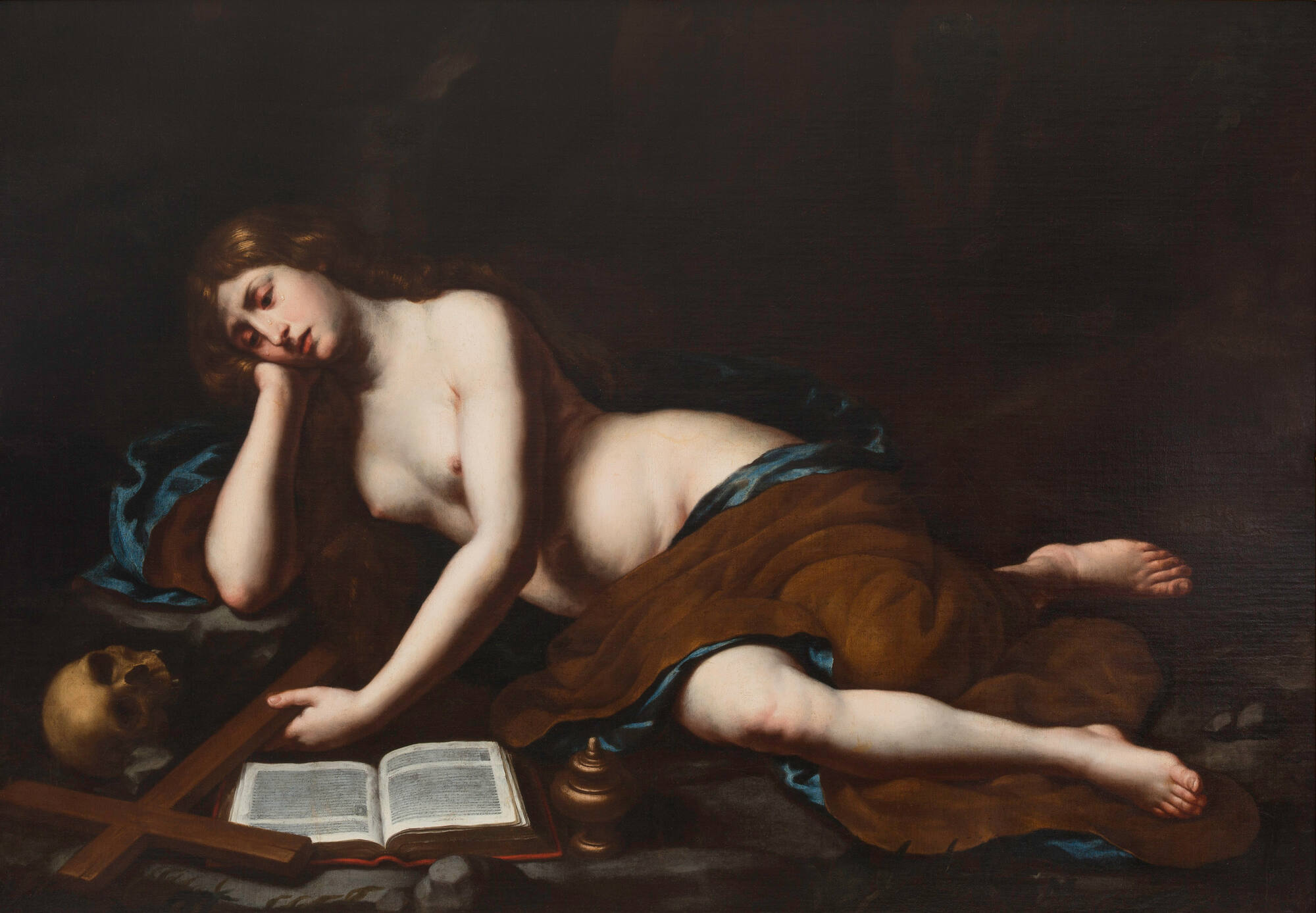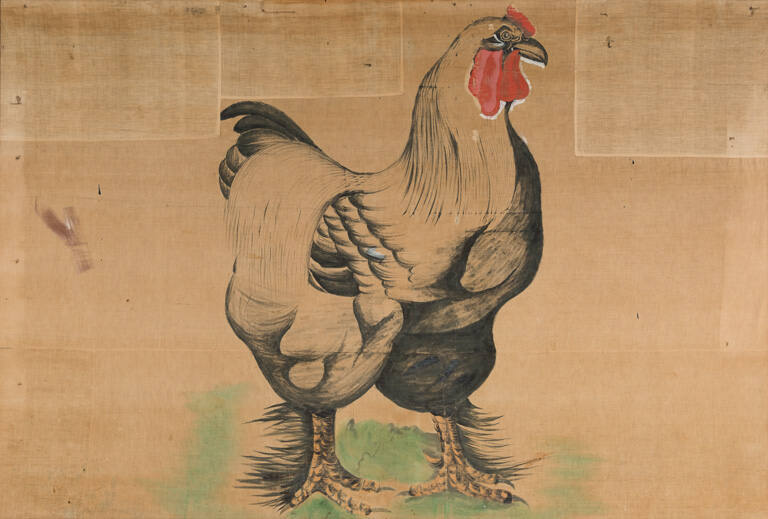
Object Details
Artist
Alessandro Turchi (or his workshop)
Date
ca. 1620s
Medium
Oil on canvas
Dimensions
44 × 63 inches (111.8 × 160 cm)
Credit Line
Gift of Quinto Maganini and Margaretta Mason Kingsbury Maganini
Object
Number
55.004
This monumental painting of Mary Magdalene, most often characterized as a prostitute turned early Ch(…)
This monumental painting of Mary Magdalene, most often characterized as a prostitute turned early Christian hermit saint, is a prime example of “conversion paintings,” a subject matter popular with Counter-Reformation artists. Accounts of her life relay that after the death of Christ, Magdalene was struck by a desire to turn from her wicked ways; her remaining years were spent in a cave fasting and studying scripture. Here, she is shorn of all of her earthly trappings—including clothing—as she contemplates a life of religious piety. Yet, Magdalene’s body is still represented as desirable: nude, save for a piece of drapery around her hips; her fleshy torso and curving profile are more akin to a portrayal of Venus than an ascetic saint.
Faced with the resurgence—and sensualization—of religious art, Counter-Reformation theologians issued a response to the unlikely marriage of baroque nudity and Christian subject matter. Images like the present example were allowed because they did not provoke “carnal [or] impure thoughts in the soul of the spectator” if the audience kept in mind its religious intentions. The onus, then, was on the viewer to reconcile the sensual overtones with the Magdalene’s core devotional message, rather than to fall prey to her feminine wiles.
(“Undressed: The Nude in Context, 1500–1750,” text by Brittany R. R. Rubin and presented at the Johnson Museum February 9–June 16, 2019)












